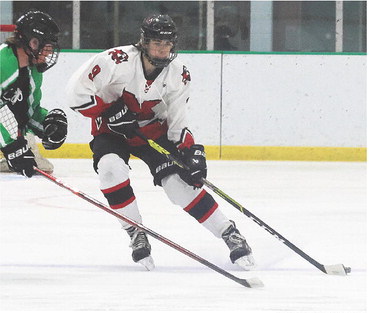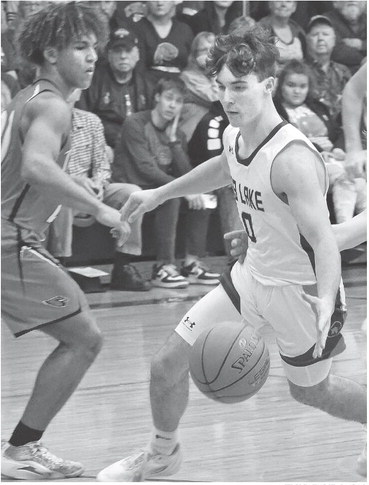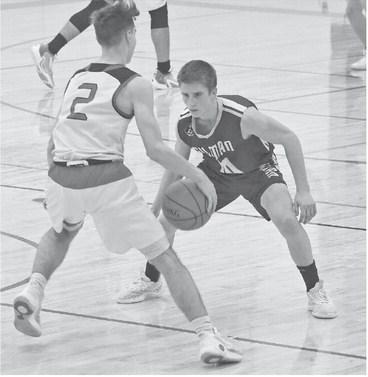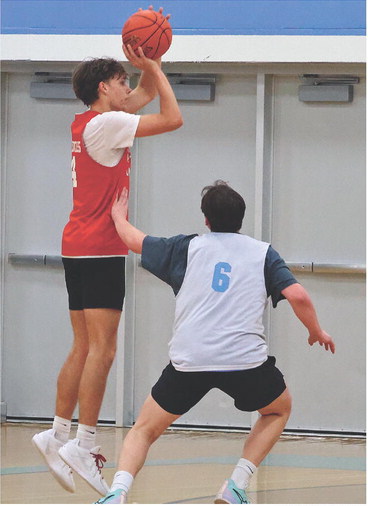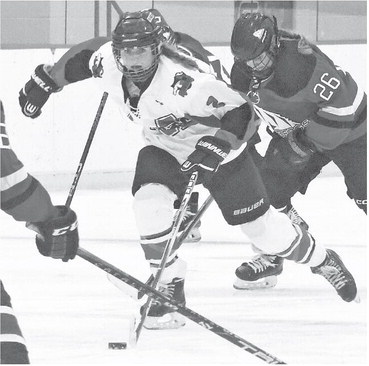Board of Control delays fall start dates
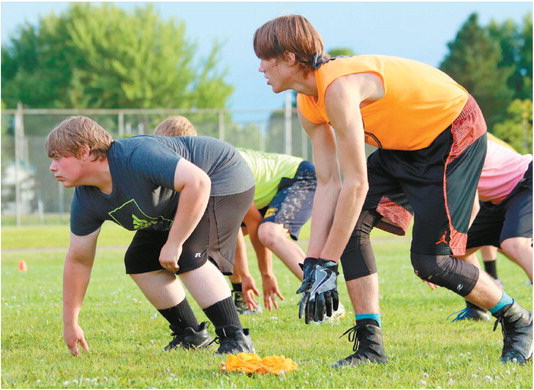

THE TRANSITION TO 8-MAN BEGINS
WIAA TACKLES THE COVID QUESTION
Hope remains alive for a fall high school sports season in Wisconsin, but first-practice dates will be delayed for all sports except cross country following action by the Wisconsin Interscholastic Athletic Association’s (WIAA) Board of Control on July 23.
A nearly three-hour long discussion ended with the board agreeing by an 8-3 vote to set a first practice date of Aug. 17 for low-risk sports cross country, girls swimming, girls tennis and girls golf. Higher-risk sports of football, volleyball and boys soccer will be allowed to start their seasons on Labor Day, which is Sept. 7.
The end dates of each fall sport’s season will remain the same, but athletes and fans need to be prepared for the possibility that their seasons may not end with traditional state tournaments.
Seasons will hinge on whether local health departments and conditions allow amid the ongoing COVID-19 pandemic.
The message from WIAA executive director Dave Anderson throughout the meeting, which was followed online by at least a couple thousand people, was that if there is any way to provide opportunities for kids to compete, the WIAA will do its best to make it happen.
“Frankly in my mind if I had that unilateral authority I would say to you as the board for those of our members who are able to sponsor fall sports, let’s go,” Anderson said when asked by new board president Eric Russell for a recommendation. “If you need a delay, fine, but let’s go to Sept. 1 or whatever the board determines.”
The special meeting was called in response to a proposal submitted in early July by a group of school administrators to move fall sports to spring and then move spring to summer to potentially give all sports programs a better chance to have a season during the 2020-21 school year.
While that plan, known as the CESA 3 or Southwest Wisconsin plan, never reached the floor for a vote, there are aspects of it still in play.
Russell, the superintendent of Baldwin-Woodville Area Schools, first threw the specific start dates out for discussion along with the possibility of using spring as a fallback for schools that aren’t able to provide fall sports. Stratford district administrator Scott Winch took it a step forward, making the motion to set the start dates of Aug. 17 and Sept. 7 and giving the WIAA’s executive staff the flexibility to come up with a model that creates second semester opportunities for competition for the schools that can’t compete in fall. That motion was seconded by Manitowoc athletic director Dave Steavpack.
Medford native Phil Ertl, superintendent of the Wauwatosa School District, proposed an amendment to Winch’s motion, calling for an Aug. 24 start date for the high-risk sports. It was seconded by Paul Pedersen, Eau Claire Regis principal and the board’s nonpublic school at-large representative, but they were the only ones supporting that amendment in a 9-2 vote.
“My thought process is that if we’re thinking that starting sports after the school year starts is going to be less of a distraction to our efforts to get school going, it’s just my opinion, I think it’s a mistake,” Ertl said. “I think if we can start sports before the school year, we’re going to be much better off. Probably more importantly, our kids have been waiting a long time.” Winch’s original motion passed 8-3 with the dissenters being Willy Chambers, superintendent of the Black Hawk School District; Bernie Nikolay, the district administrator at Cambridge, and Pedersen. Chambers represents District 5, where the Southwestern Wisconsin plan came from, while Nikolay represents District 6 where several schools in Dane County have already announced they are starting the year with virtual schooling and the Big 8 Conference has announced it is forgoing conference competitions in the fall.
Several models proposed
While the Southwest Wisconsin plan received a lot of attention, there were several other plans for the fall calendar under consideration.
WIAA assistant director Stephanie Hauser said she had discussed with the Wisconsin Athletic Directors Association a truncated version of the Southwest plan which would end the athletic year at its normal time in June, a flipping of the fall and spring seasons, delaying all fall sports until Sept. 1, delaying only football until Sept. 1 and delaying all fall sports to the week of Sept. 14.
WIAA deputy director Wade Labecki said the Wisconsin Football Coaches Association proposed starting its season no later than Sept. 1, dropping the two non-conference games to start the newlydesigned 11-player football season structure that was set to debut this fall and reducing the playoffs to give everyone seven regular-season games.
WIAA assistant director Kate Peterson Abiad said the Wisconsin Cross Country Coaches Association debated several models such as keeping the fall season as is, flipping fall and spring, the Southwest Wisconsin plan, a delay until mid-September and a move to spring for football, soccer and volleyball while the low-risk fall sports stay where they are. Those coaches overwhelmingly favored keeping the season as is, with a delay being a distant second in preference.
Labecki shared results of a survey done last week of superintendents and district administrators from around the state. He said 51% of the 358 who responded favored the Southwest plan, while 22% wanted a delay, 15% wanted to go ahead as is and about 10% favored complete cancellation of fall sports.
Of those who favored going ahead with fall, 40% said they favored more regular season play and less focus on the tournament, while just under 60% preferred reducing the regular season and keeping the tournaments as is.
Labecki said the survey results showed 21 schools that allowed coaches to use their summer contact days ran into an issue with a positive COVID case, but 93% did not.
However, WIAA staff members relayed summaries of their discussions with each sport’s state coaches association and none of those associations supported the Southwest Wisconsin plan or, especially, taking the school athletic year deep into the summer of 2021. Generally, those rejections were all for the same reasons such as fear of a lack of participation due to competition with other summer options, facility availability, reduced availability of coaches and officials and competition with students’ jobs, family plans, military commitments and departures for college.
“The clearest messages that are coming from the coaches association for track and field and cross country is that they are not in favor of moving their season to the summer,” Peterson Abiad said. “Their 2020 season was completely lost. They feel that this would be another lost year for many of them. Participation would suffer with summer jobs, graduation, lack of transportation and other summer sports and departures for college.
“They believe that their coaches availability would be in question,” she said. “There are coaches who this year used the extended spring season contact days to work with their teams and they would be asked to once again give up their family time, their vacation plans with their families, for a second summer in a row.”
Labecki said the state’s baseball coaches agreed.
“Their reasoning is they’ve already been affected and canceled once by the pandemic,” he said. “They really don’t want to lose participation in their sport. If they went to the summer they’re afraid they’d make their families choose between jobs, vacations, club travel teams and those are just a few of their issues. The biggest reason is the low participation because of the travel ball situation. Remember we did have summer baseball at one time and it just kind of wilted away.”
Labecki also oversees football for the WIAA.
“This would reduce the number of weeks and games obviously,” he said. “(The coaches) believe football is a fall sport and they believe that it presents too many challenges especially with field conditions and availability of fields. Many of the football fields are used as soccer fields in the springs. While we have upwards of 60 turf fields, most of those rural fields that have soccer will now be football and soccer.
“The winter conditions and the spring conditions in the northern part of the state are not real suitable to playing baseball much less moving football into that area,” he added. “My concern is that if we move football into the spring, not only do we have snow in the northern part of the state but we will often introduce heat into a longer part of the football season.”
When to go
Anderson reported he has weekly Zoom meetings with his colleagues from 11 other Midwestern states, all of whom plan to move forward with their fall seasons as planned. Illinois is the exception only because a lawsuit was filed over its rules for sports during the pandemic.
One of the models to watch, he said, is Iowa, which held its baseball and softball seasons in the summer as it usually does. The baseball state tournament started July 24 in Des Moines and finishes Aug. 1.
“The boys director reported they had in the neighborhood of 25% of the schools that were participating in their baseball program had to, in one point in time or another, hit a pause button. But they are moving forward,” Anderson said.
The Iowa Girls High School Athletic Union reported out of 335 teams, 26 were impacted by COVID-19 during the season and 11 ended their seasons early. In total, 97% finished the season.
“We are beginning to transition away from the use of the term state championship,” Anderson said. “Absolutely and of course if we are able to provide that opportunity we want to do it. However, where we find ourselves right now, our recommendation is we would advise against large multi-school events. We would advise against out-of-state travel or bringing schools into your community from out of state. We believe that we will go as far as a season and the virus may allow us to go. That might be to a championship. However, I think we are best off to look at how can we provide opportunities for kids to get together, give them those experiences and go as far as we can to have a culminating event. I think it’s pointless to try to project what we might be able to do in November and certainly in March.”
“From the athletic directors’ perspective we would much rather have our students participating and have that extra couple of weeks to participate than compete for state championships,” said Todd Sobrilsky of Waukesha South, president of the Wisconsin Athletic Directors Association. “State championships should be based on a level playing field across the state and that’s just not going to be possible in the current environment.”
Feedback from administrators around the state showed the majority favored separating the start of school and the start of sports, which is why delays into September were proposed. Russell made his initial pitch for Sept. 7 as a compromise between the Sept. 1 and Sept. 14 start dates for the high-risk sports.
That’s where Ertl countered by saying starting sports before school starts would be equally effective at minimizing that conflict for administrators and school officials.
“I help out with coaching also and, for the last three days for four hours a day, I’ve been spending it with 40 kids, masked up, social distancing to best degree you can in football and it can be done,” he said. “If you could see these kids and if people could see the excitement. They don’t care. They’ll wear a mask under their helmet. These kids will do anything to play in sports. If we can find a way to get them back two weeks earlier. We talk mental health, man, I’m seeing it.”
Another factor that was vital in the discussion was the belief that if WIAA sports remain on hold, kids and parents will continue to find places to compete and the fear is those outlets may not function as safely as the WIAA believes it can.
“I fear if school activities go away, other activities creep up, there’s less oversight, maybe less responsibility, less medical partnership,” said Dr. Kevin Walter, who is the director of Pediatric and Adolescent Sports Medicine at Children’s Hospital of Wisconsin and associate professor at Wisconsin Medical College, as well as the chair of the WIAA’s Sports Medical Advisory Committee. “There’s potentially an increased chance for harm and risk. With the WIAA and member schools working together, we can do our best to mitigate that risk and reduce that harm.”
“There’s going to be fall sports, without a doubt, in Wisconsin,” Ertl said. “I think there’s people probably listening to this right now with an email ready to go to fire off and say, ‘let’s start a soccer club, let’s get volleyball, let’s have all the club sports’ and I know football’s a consideration out there too. I’ve had those conversations. There will be club football if we’re not doing it. And we end up again not only educationally having our underprivileged and underserved kids being left behind. We’d do it again in sports if we end up cancelling or removing that opportunity.”
Anderson added one more eye-raising note during the discussion saying the Missouri State High School Activities Association is not allowing schools that are opening virtually to compete, but he opposes Wisconsin doing that.
“School is still going on,” he said. “It’s in a different style and manner of delivery of that instruction, but school is going on. If you are in school and you have full-time students that want to get going, by all means that would not be an issue this year with WIAA.”

